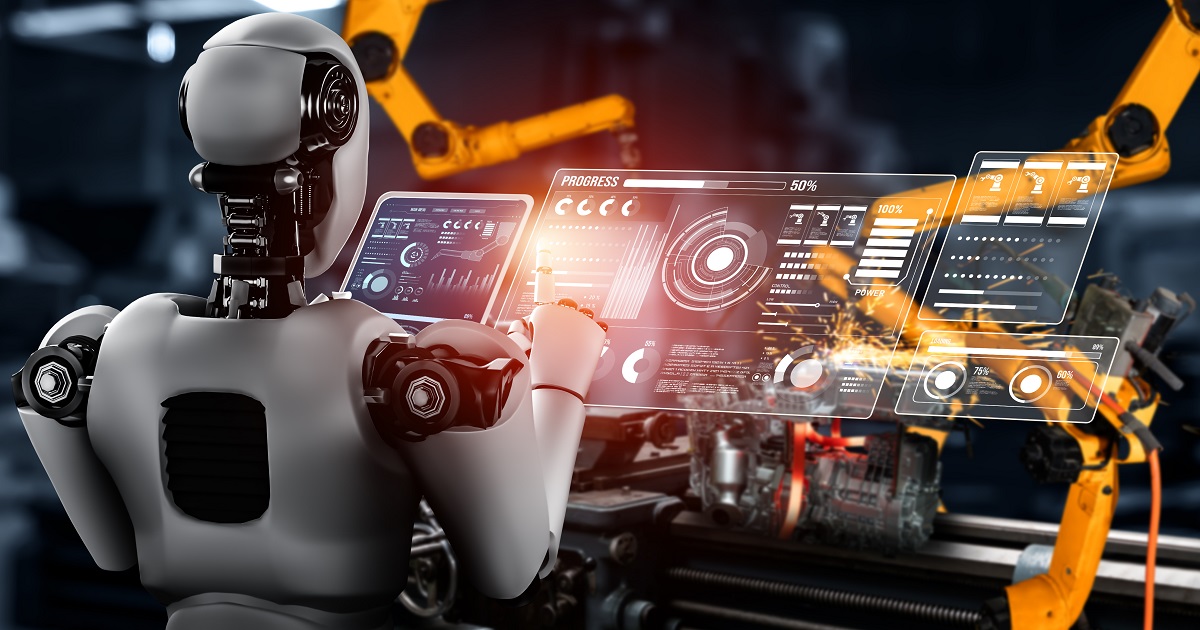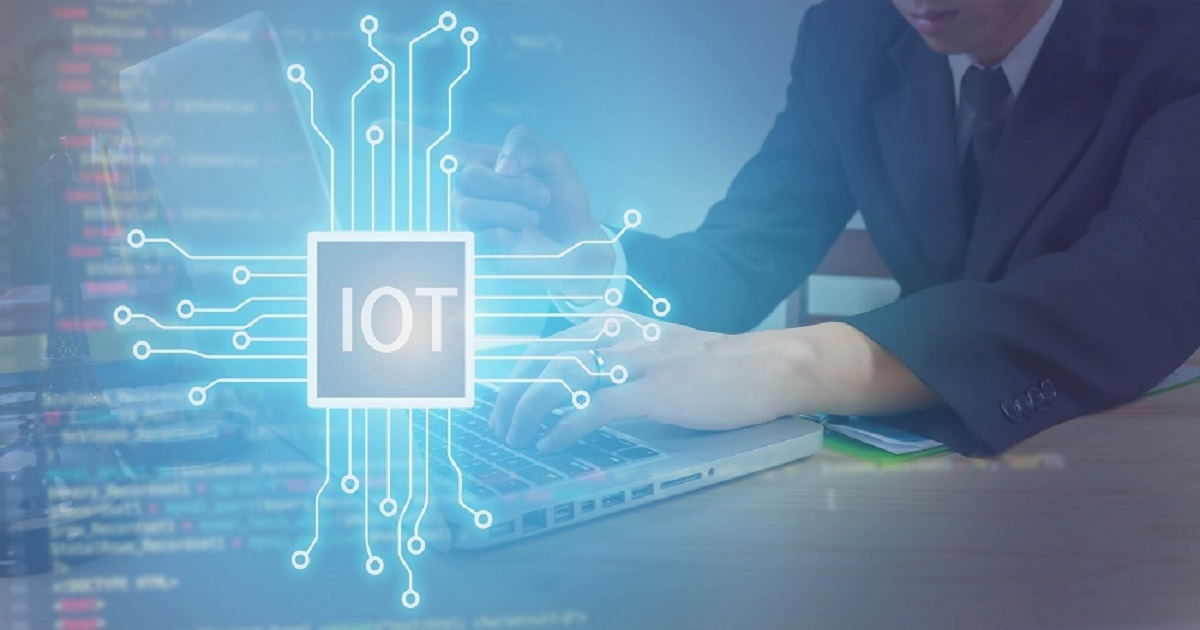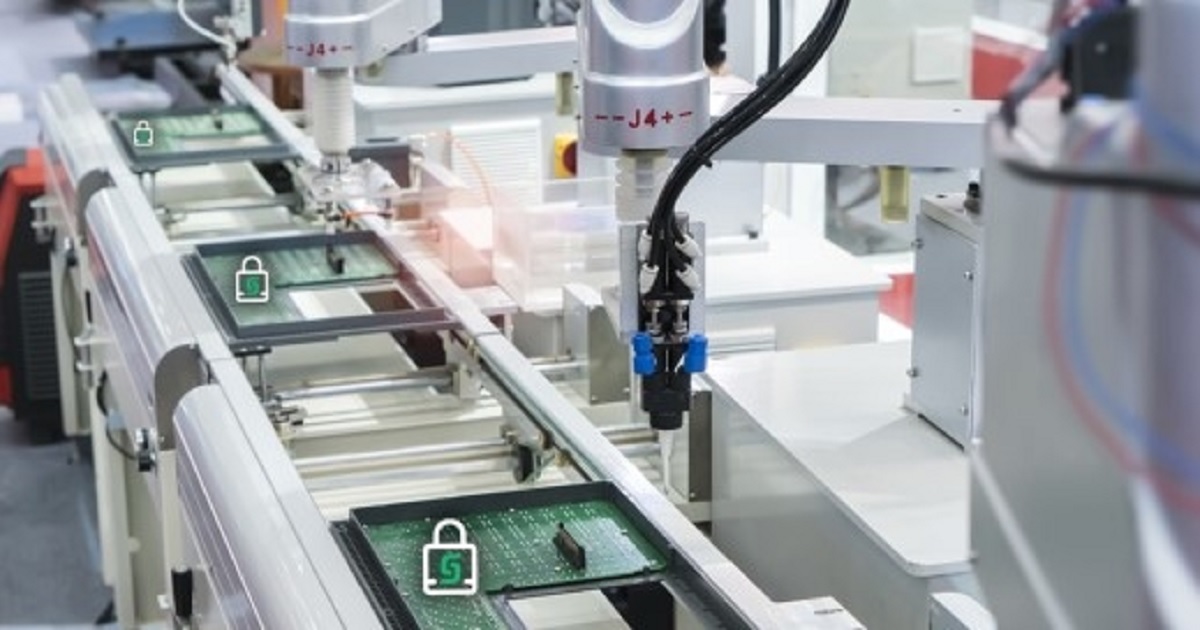
IoT Security
Article | July 5, 2023
Introduction
We live in a world where technology is becoming more and more intertwined with our daily lives. It’s no longer just our laptops, smartphones, and tablets connected to the internet – now, our homes, cars, and even our clothes can be too. This interconnectedness is made possible by the internet of things (IoT), a network of physical objects equipped with sensors and software that allow them to collect and exchange data.
IoT devices have the potential to transform the way we live and work. They can make our lives more convenient and help us be more efficient. IoT devices can also help us to save money and to improve the quality of our lives.
IoT devices are devices that are connected to the internet and can collect, send, and receive data. They can be anything from fitness trackers to industrial machines. IoT devices are used across a variety of industries, and they are becoming more and more commonplace. At [x]cube LABS, we have helped global enterprises deliver great value to their consumers with IoT devices, and in this blog post, we will talk about how IoT devices are used in different industries. Additionally, we will give some examples of IoT devices that are being used in each industry.
Healthcare
IoT devices are being used in healthcare to provide better patient care and to improve the efficiency of healthcare organizations. IoT devices can be used to monitor patients’ vital signs, track their medication adherence, and collect data about their health. IoT devices can also be used to provide remote patient monitoring, track medical equipment, and support clinical research.
There are many different types of IoT devices that are being used in healthcare. Some of the most common types of IoT devices that are being used in healthcare include wearable devices, such as fitness trackers and smartwatches; medical devices, such as pacemakers and insulin pumps; and hospital equipment, such as IV pumps and ventilators. All these devices collect data that can be used to improve patient care and make healthcare organizations more efficient.
Manufacturing
IoT devices are being used in manufacturing to improve the efficiency of production lines and to reduce the amount of waste. IoT devices can be used to track the production of products, monitor the condition of machinery, and control the flow of materials. IoT devices can also be used to provide data about the quality of products and to improve the safety of workers.
One of the most common types of IoT devices that are being used in manufacturing is the industrial sensor. Industrial sensors are used to monitor the production of products, the condition of machinery, and the flow of materials. Industrial sensors can also be used to provide data about the quality of products and to improve the safety of workers. The availability of data from industrial sensors is helping manufacturers to improve the efficiency of production lines and to reduce the amount of waste.
Retail
IoT devices are being used in retail to improve the customer experience and increase sales. IoT devices can be used to track inventory, provide customer loyalty programs, and collect data about customer behavior. IoT devices can also be used to provide personalized recommendations, targeted promotions, and real-time customer support.
IoT devices are changing the retail sector in a number of ways. One of the most important ways that IoT devices are changing retail is by providing retailers with real-time data about their customers’ behavior. This data allows retailers to provide a more personalized shopping experience. IoT devices are also being used to improve the efficiency of retail operations, such as inventory management and customer loyalty programs.
Transportation
IoT devices are being used in transportation to improve the safety of drivers and reduce traffic congestion. IoT devices can be used to monitor the condition of vehicles, track their location, and control their speed. IoT devices can also be used to provide data about traffic conditions and to improve the efficiency of transportation systems.
One of the most common types of IoT devices that are being used in transportation is the GPS tracker. GPS trackers are used to monitor the location of vehicles, and they can be used to track the speed and movement of vehicles. GPS trackers can also be used to provide data about traffic conditions and to improve the efficiency of transportation systems.
Agriculture
Agriculture has become increasingly reliant on IoT devices in recent years. IoT devices are being used in agriculture to improve the yield of crops and to reduce the amount of water and fertilizer that is used. IoT devices can be utilized to monitor the condition of crops, track the location of farm animals, and control the flow of irrigation water.
These innovations are helping farmers to increase the yield of their crops and to reduce the amount of water and fertilizer that is used. The data collected by IoT devices is also helping farmers to make more informed decisions about planting, irrigation, and crop maintenance.
Smart Homes
Smart homes are becoming increasingly popular, and IoT devices are the backbone of these systems. IoT devices are being used in homes to improve the security of the home, reduce energy consumption, and improve the quality of life. They can be used to monitor the condition of the home, track the location of family members, and control the operation of home appliances. What’s more, IoT devices can also provide data about the quality of the air, which can be used to improve the efficiency of home security systems. In the future, IoT devices will become an integral part of the smart home, and they will be used to control a wide variety of home appliances and systems.
Aviation
The aviation industry is making use of IoT devices to a great extent. The aviation sector is one of the most heavily regulated industries in the world, and IoT devices are being used to improve the safety of passengers and crew members.
IoT is changing the aviation industry by providing data that can be used to improve the safety of pilots and passengers. IoT devices can be used to monitor the condition of aircraft, track their location, and control their speed. IoT devices can also be used to provide data about weather conditions and to improve the efficiency of aviation operations, which can ultimately lead to lower airfare prices.
Energy
The energy sector is also utilizing IoT for a variety of applications. One way that IoT is changing the energy sector is by providing data that can be used to improve the efficiency of energy production and consumption.
They are being used to improve the efficiency of power generation and distribution. IoT devices can be used to monitor the condition of power plants, track the location of power lines, and control the flow of electricity. By using IoT devices to monitor and optimize the power grid, energy companies can reduce the amount of power that is wasted and ultimately lower energy bills for consumers.
Conclusion
IoT devices are changing the world in a number of ways. They are providing data that can be used to improve the efficiency of operations in a variety of industries, from retail to transportation to agriculture. It is likely that IoT devices will become an increasingly important part of our lives in the future due to the efficiency and data that they can provide.
Read More

Enterprise Iot
Article | May 11, 2023
Learn more about IoT data protocols and what makes them essential for a cohesive IoT ecosystem. This article will provide a detailed view of data protocols and their importance for modern businesses.
1 Significance of IoT Data Protocols for Business Operations
IoT ecosystems form an integral part of many businesses today, and IoT data protocols serve as the foundation for seamless communication and data exchange between connected devices. IoT protocols ensure the integrity and reliability of data, empowering businesses to make informed decisions, optimize operations, enhance productivity, and drive innovation. With standardized and secure IoT protocols and standards, companies can achieve efficient data transmission and allow for scalability across diverse IoT ecosystems. Understanding and leveraging the right protocols is essential for businesses to benefit from the full potential of their IoT investments and gain a competitive edge in today's interconnected world.
2 Understanding IoT Data Protocols
IoT data protocols are standardized rules and formats that ensure efficient and secure data transmission for efficient IoT communication. By adhering to established protocols such as MQTT, CoAP, and AMQP, businesses can maintain interoperability, scalability, and robust data transmission of IoT data, ensuring efficient data storage and management for their IoT ecosystem. This, in turn, empowers organizations to monitor and control critical processes in real-time and make informed decisions.
2.1 Role of IoT Data Protocols in the IoT Ecosystem
The seamless functioning of an organization's IoT ecosystem relies on the pivotal role played by IoT data protocols. These protocols, serving as the communication backbone, enable secure transfer and efficient data processing, thereby facilitating the seamless exchange of information within the IoT network. Consequently, businesses operating within the IoT sphere can harness the power of reliable data communication enabled by these protocols to unlock insights that drive innovation. IoT data protocols serve as the vital link that fuels the interconnected landscape of IoT devices, elevating the efficiency and efficacy of businesses as they navigate the complex web of IoT technologies and leverage its immense potential.
2.2 Overview of Common IoT Data Protocols
The IoT data protocols come with their own set of applications and challenges. Understanding each protocol's individual use cases will help businesses set up and scale their IoT device ecosystems.
MQTT (Message Queuing Telemetry Transport): MQTT is a lightweight and efficient protocol designed for low-power devices and unreliable networks. It uses a publish-subscribe model, making it ideal for IoT applications where bandwidth and power consumption are crucial factors, such as remote monitoring and control systems.
CoAP (Constrained Application Protocol): For resource-constrained IoT devices, CoAP is designed to enable smooth communication over the Internet. It uses a client-server model and is suitable for IoT applications where devices have limited processing power and memory, such as smart home automation, environmental monitoring, and healthcare systems.
HTTP (Hypertext Transfer Protocol): Although primarily designed for web applications, HTTP is also used in IoT systems for data transmission. The ubiquity and familiarity of HTTP make it a widely supported communication protocol. As a result, it is suitable for IoT devices that require high-level interoperability in applications that involve cloud integration, data analytics, and web-based control interfaces.
AMQP (Advanced Message Queuing Protocol): AMQP is a flexible messaging protocol ensuring reliable, secure, and interoperable communication between IoT devices and back-end systems. It supports both publish-subscribe and point-to-point messaging models, making it suitable for IoT scenarios involving complex routing, large-scale deployments, and enterprise integrations.
Zigbee: Zigbee is a wireless protocol designed specifically for low-power, short-range communication in IoT networks. It operates on the IEEE 802.15.4 standard and is known for its energy efficiency and mesh networking capabilities, leading to its widespread adoption in home automation, intelligent lighting, and industrial control systems.
3 Considerations for Choosing the Right IoT Data Protocol
Selecting a suitable IoT data protocol is essential to maintain smooth interoperability and a unified IoT ecosystem. Compatibility with existing infrastructure is crucial for seamless integration and cost-effective implementation. Security measures must also be robust to protect sensitive data from unauthorized access and potential breaches. Additionally, scalable and flexible data protocols in IoT are vital to accommodate future growth and evolving business requirements. Furthermore, the protocol's reliability and efficiency in transmitting data should align with the use case of IoT systems. Finally, considering the protocol's industry adoption and standardization level will also help minimize risks and enhance interoperability.
4 In Summary
IoT data protocols play a significant role in facilitating efficient and secure business operations within the IoT ecosystem. By learning more about the use cases of the most common protocols in the industry, businesses can consider factors such as compatibility, security, scalability, and reliability while choosing the most suitable option for their business. As IoT systems grow, more complex and reliable data protocols will emerge, paving the way for enhanced connectivity, interoperability, and transformative opportunities across various industries.
Read More

Enterprise Iot
Article | July 20, 2023
Understanding the Impact of IoT Device Management
The Internet of Things (IoT) industry is growing exponentially, with the potential to become limitless. The current range of existing and potential Internet of Things devices is in itself quite enormous. This also gives businesses an opportunity to pay more attention to the newest technologies.
In ascenario with rapidly increasing numbers of devices, manual management of devices becomes close to impossible, laced with human errors. Moreover, keeping an eye on hundreds of devices one by one to make sure they work the way they should is not an easy task to undertake.
Businesses at the outset of IoT adoption are most often unaware of why they require a device management platform.This is precisely why a device management platform is so crucial.It can effectively connect toall of theconnected devices and get the required information from them in the right way.
An effective device management platform can turn out to be the vital aspect that will define the success of any small or large IoT implementation project. Such a platform would ideally allow organizations to manage their internet-connected devices remotely.
"If you think that the internet has changed your life, think again. The IoT is about to change it all over again!" — Brendan O'Brien, Chief Architect & Co-Founder, Aria Systems.
Why Do Organizations Need an IoT Device Management Platform?
An effective IoT device management platform offers simplified provisioning, centralized management, and real-time insights into all existing devices and integrations to help organizations stay on top of their deployment.
Device management platforms help you keep a check on the growing number of devices while keeping errors at bay, with your growing number of connected devices. It would ensure that you have a clear dashboard and an alerting system as an effective supporting system. In addition, getting involved with IoT device management platforms can also help you in a number of other ways.
It acceleratestime-to-market and helps reduce costs
The management platform enables secure device on and offboarding
It also streamlines network monitoring and troubleshooting
IoT simplifies deployment and management of downstream applications
It mitigates security risks
Evaluating the Future of IoT Device Management
It is predicted that the world will have more than 100 billion IoT-connected devices by 2050. The future potential of the IoT is limitless, and the potential is not about enabling billions of devices together but leveraging the enormous volumes of actionable data thatcan automate diverse business processes.
Critical Aspects of the IoT's Future
The critical aspects of IoT predictionsare fast impacting several categories all across the globe, ranging from consumer to industrial.
IoT Companies and a Circular Economy
IoT firms are assisting in the development of a future with less waste, more energy efficiency, and increased personal autonomy. A connected device system, on the other hand, must be feedback-rich and responsive, and activities must be linked via data in order to be sustainable. Ways to achieve a responsive and actionable system include:
Extending the use cycle with predictive maintenance.
Increasing utilization and reducing unplanned downtime.
Looping the asset for reuse, remanufacture, or recycle.
Common Billing and Revenue Challenges
We are currently moving toward a future where everything from cars to household machines and home security will be sold by manufacturers as subscription services. This will result in organizations selling IoT subscriptions looking for new ways to managebilling and revenue for their business model.
Service diversity
Data monetization
Complex stakeholder network
Cost management
Cohesive IoT Deployment Strategy for the C-suite
With the future of IoTon its way to becoming the most disruptive innovation and compelling technology that will facilitate better services to customers, from a support perspective, being connected remotely with customers' devices offers considerable advantages to service organizations. However, this is also not a new concept; earlier, large organizations and data storage companies were remotely connected to their client systems using dedicated telecommunications links before the commercialization of the internet.
Using the estimates of the exponential rise in connected devices, the IoT offers a wide array of opportunities to effectively improve the industry, such as:
Consumer activity tracking includes in-store applications that assess traffic flow and purchase choices.
Manufacturing, storage, distribution, and retail operations have been optimized to increase productivity and reduce waste.
Energy, inventory, and fleet assets are all used more efficiently.
Improved situational awareness, such as vehicle warning systems
Enhanced decision-making, such as medical equipment that notifies doctorswhen a patient's health changes.
Self-parking and self-driving automobiles are examples of autonomous systems.
An interesting case study with Michelin showed that they were adding sensors to tires to better understand wear over time. This data is important for clients to know when to rotate or replace tires which saves them money and enhances safety. However, this also implies Michelin can move away from selling tires and instead lease them. Because sensor data will teach the corporation how to maintain the tires, Michelin now has a new economic incentive to have tires last as long as feasible. IoT device management plays a crucial role in effectively accumulating and processing data from all the widely distributed IoT sensors.
Conclusion
As more sectors discover the advantages linked machines can bring to their operations, IoT enterprises have a bright future ahead of them. Newer services are steadily being pushed out on top of IoT infrastructure in industries ranging from healthcare to retail, telecommunications, and even finance. Due to increasing capacity and AI, service providers will move deeper into IT and web-scale industries, enabling whole new income streams as IoT device management platforms adapt to address these obstacles.
FAQ
Why Is Device Management Crucial for the IoT?
An IoT device management platform's features may help you save time and money and increase security while also providing the critical monitoring and management tools you need to keep your devices up-to-dateand optimized for your unique application requirements.
What Impact Will the IoT Have on the Management or Administration Sectors?
IoT technology allows for increased collaboration, but it will also free up your team's time from monotonous and isolating duties. For example, routine chores may be encoded into computers, freeing up time to concentrate on higher-order tasks.
What Are the Basic Requirements for IoT Device Management?
The four essential needs for IoT Device Management are as follows.
Authentication and provisioning
Configuration and Control.
Diagnostics and monitoring
Updating and maintaining software.
Read More

Article | April 16, 2020
Tech companies are stepping up Internet of Things technologies to protect against COVID-19 and future viruses by using LiDAR and infrared cameras to detect a person’s body temperature from a distance or even handwashing. Keeping the data secure in such detection is also going to be a challenge. One approach is to put a chip inside an IoT device when it is manufactured to enable strong authentication and secure communication, mainly to guard against device counterfeiting. Hitachi Vantara has touted forward looking infrared cameras (FLIR) cameras to detect the temperature of a person from a distance. That way a passenger on a train or a worker or a customer in a store can be non-intrusively screened, according to a blog from Mark Jules, global vice president of smart spaces and video intelligence.
Read More